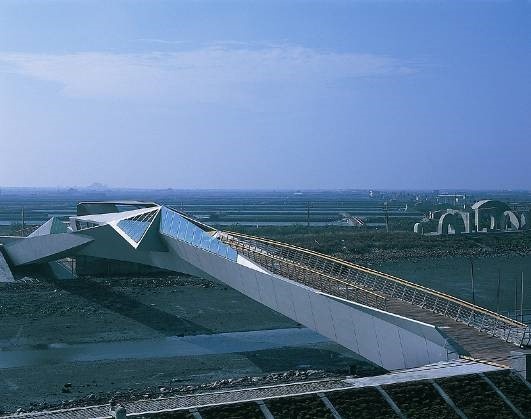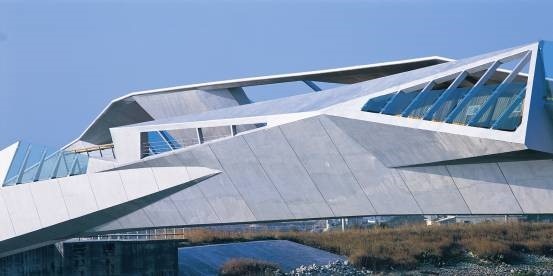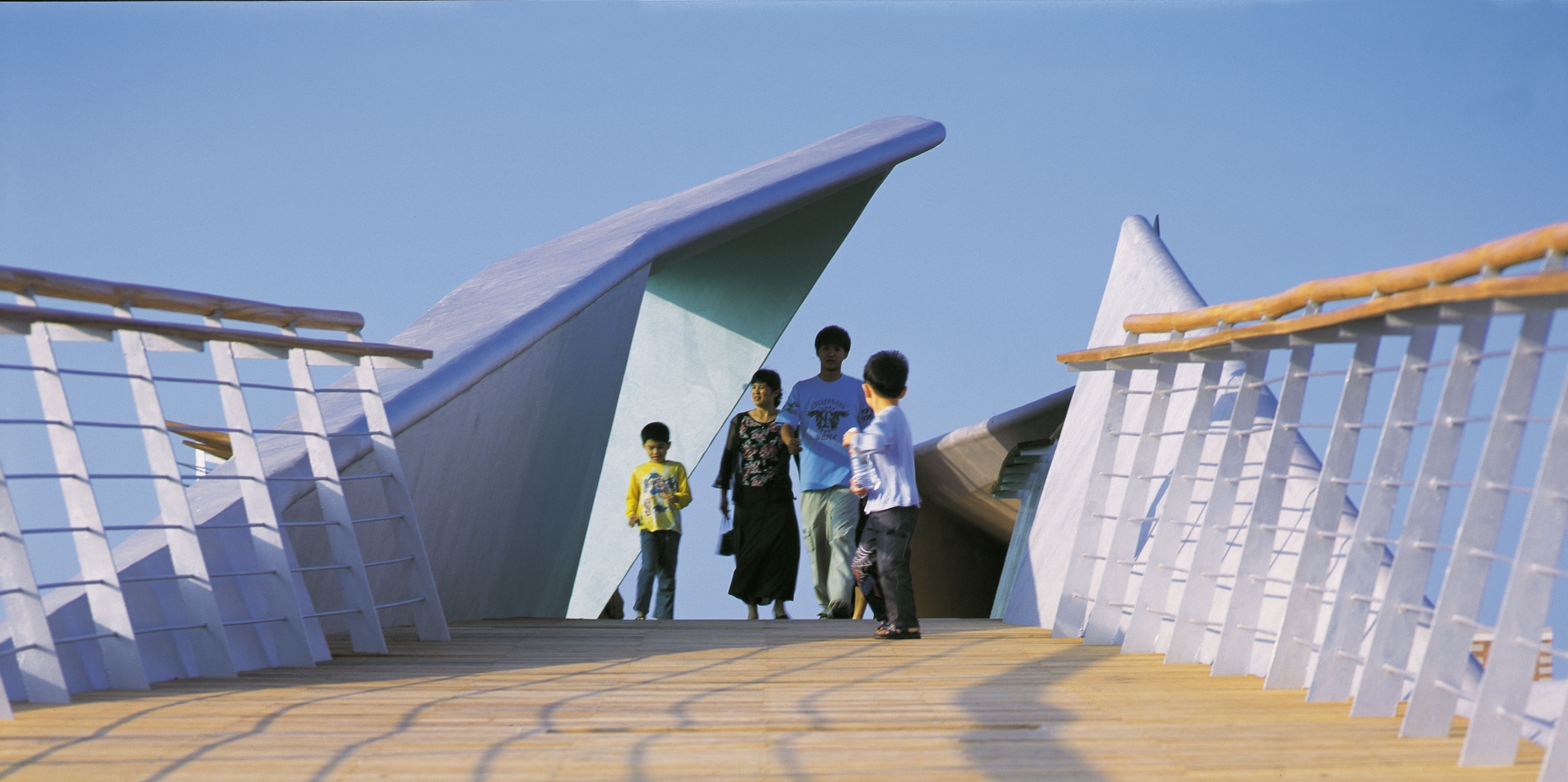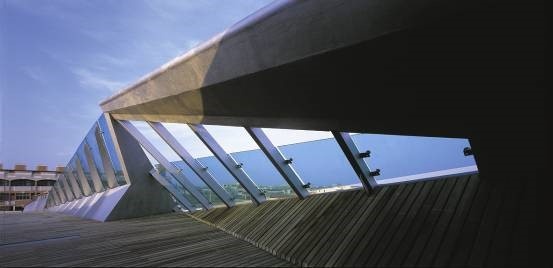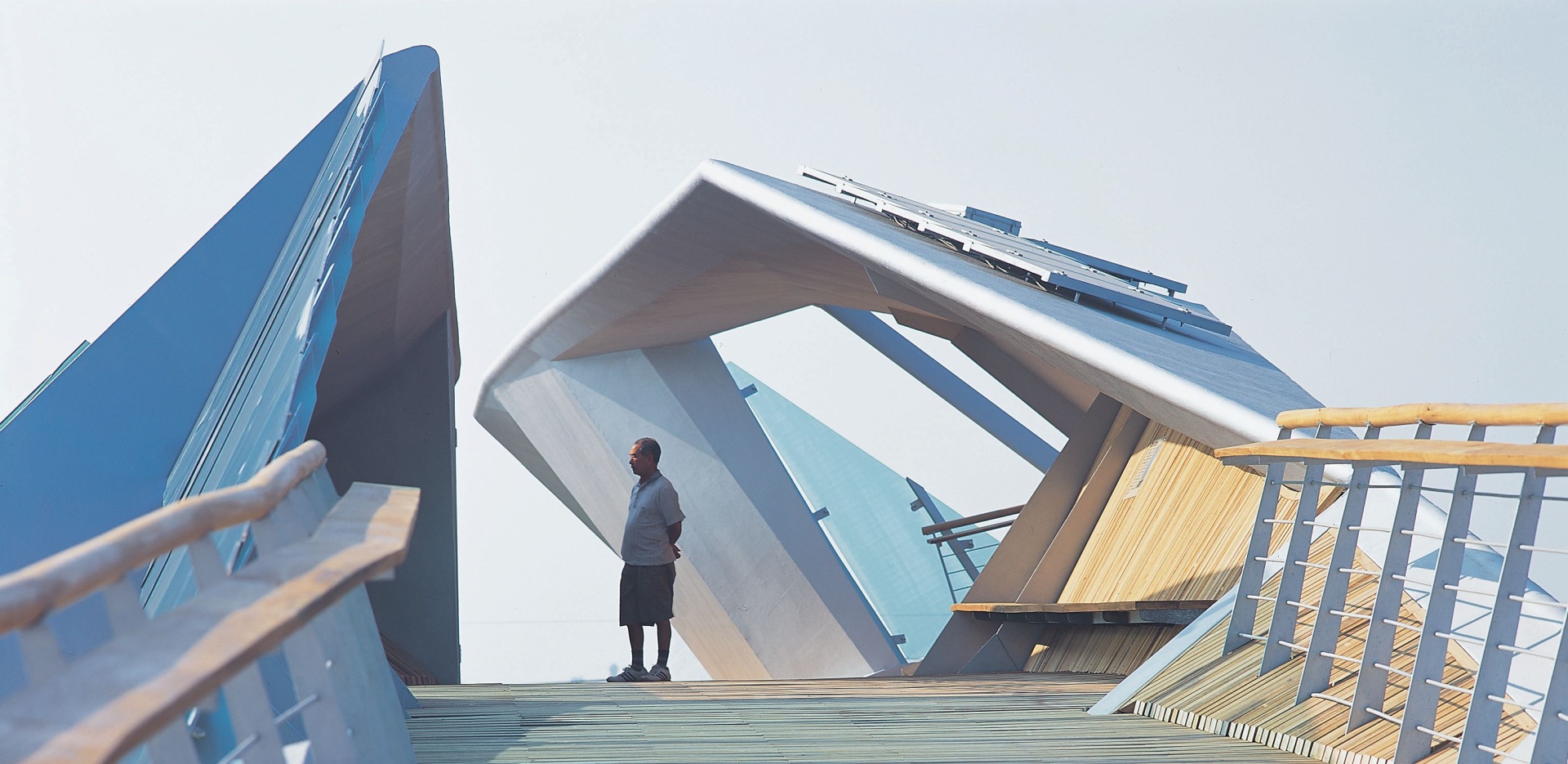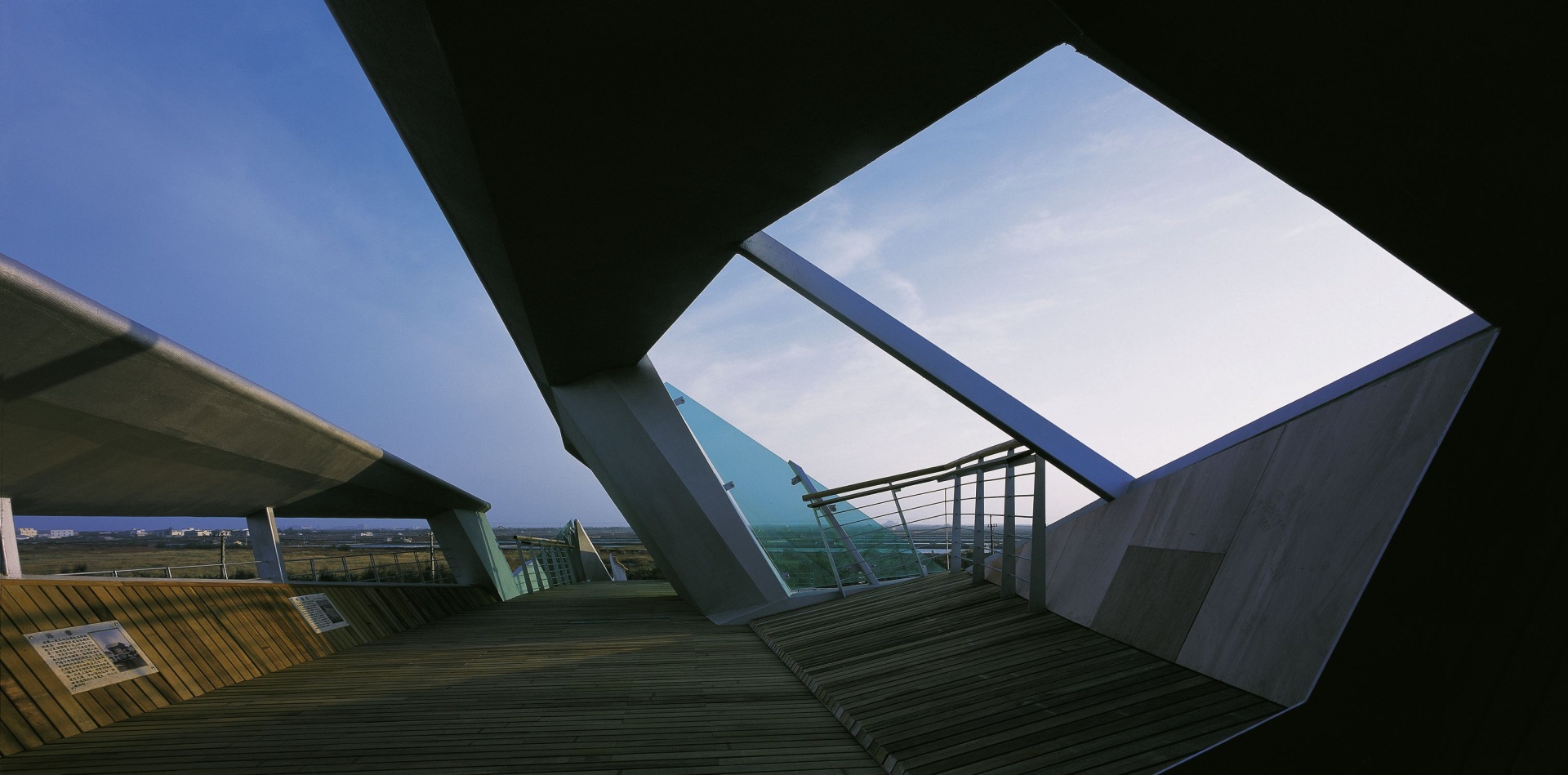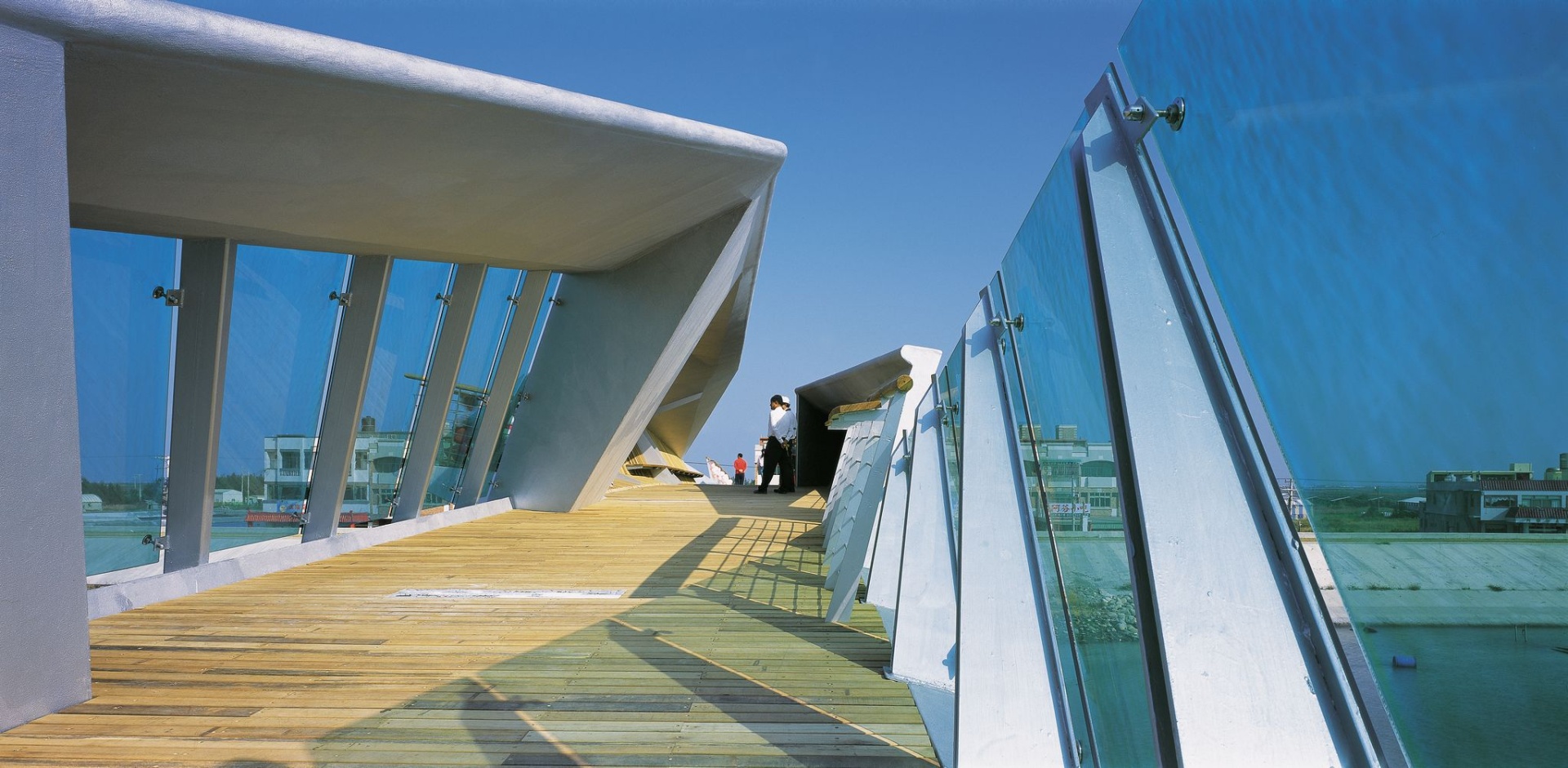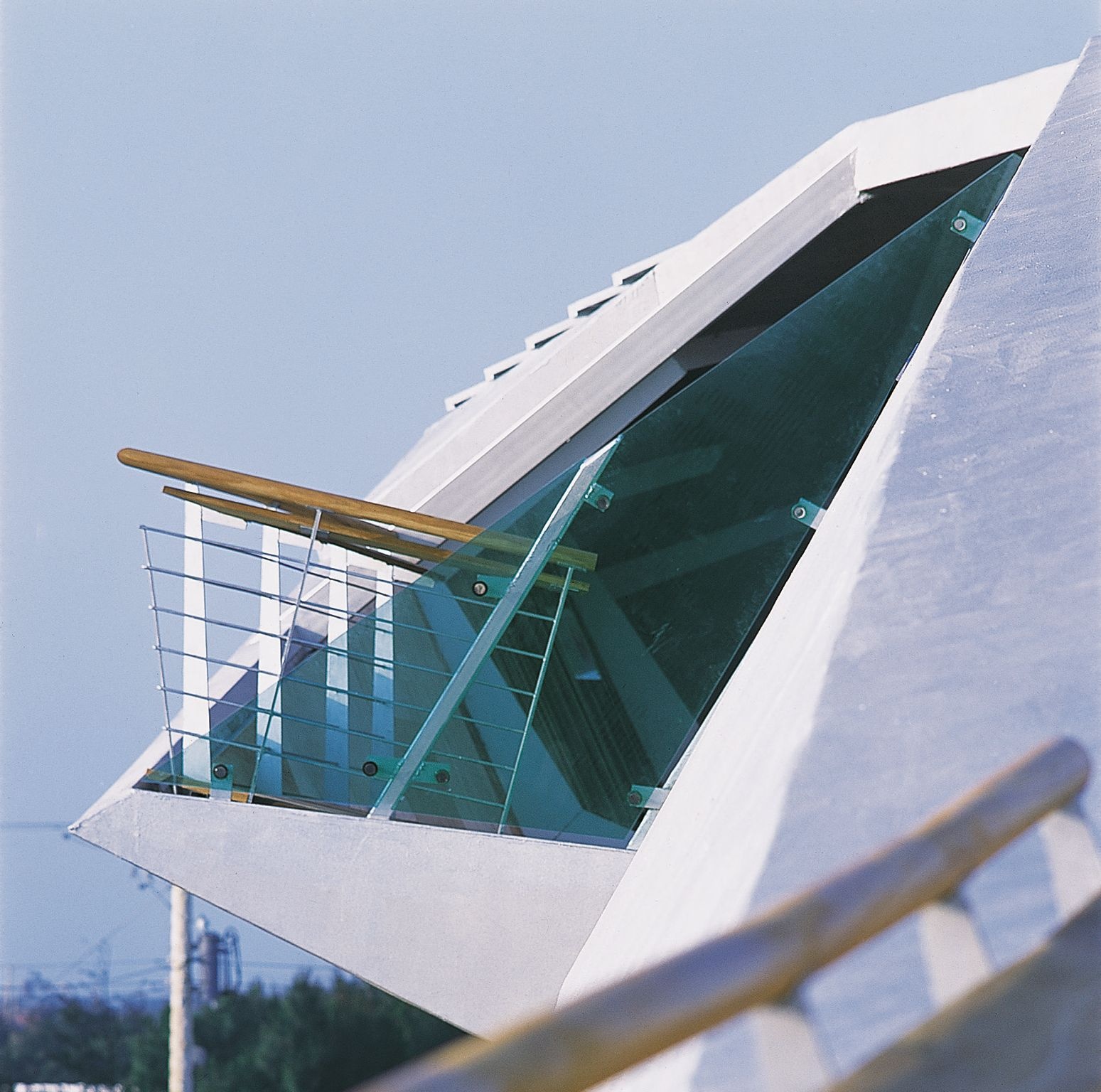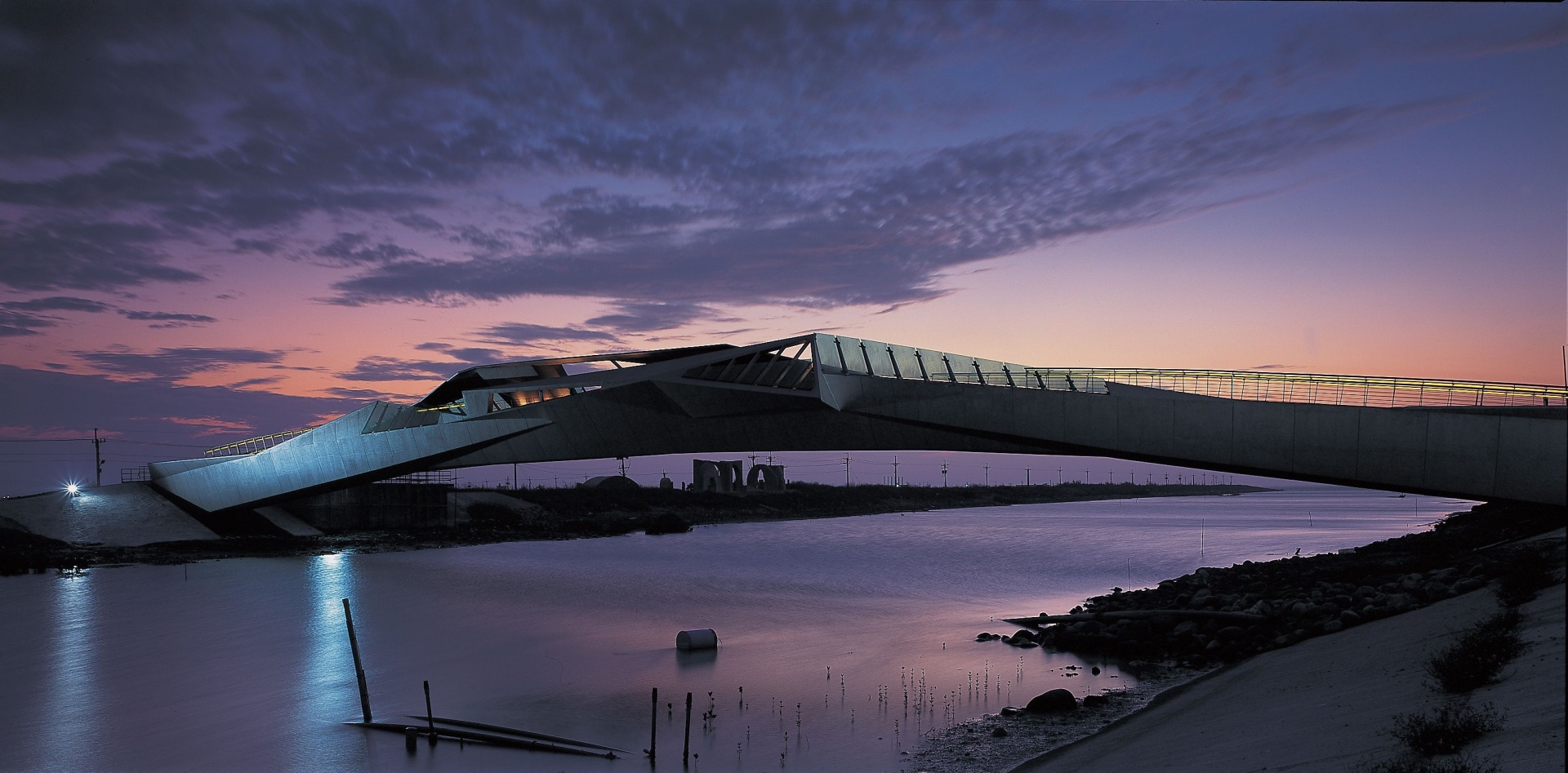
Wang-Gong Footbridge
Building a "multi-faceted" bridge, the "Changhua Wang-Gong Footbridge" aims to break away from the singular functionality of traditional bridges. On this bridge, it is not just about connections and crossings but also about opportunities to pause, observe, intertwine, turn, and linger. By integrating tourism, recreation, and ecological interpretation, the bridge goes beyond its conventional purpose and becomes a unique and multi-faceted form with diverse functions and significance. Located near Wangong Fishing Port, it spans across Hougang Creek, connecting the port area and the neighborhood. As Changhua County Government plans to transform Wangong Fishing Port into a multi-functional harbor, this bridge serves not only as a connector but also as a scenic viewpoint, recreational space, and ecological education site, becoming a new landmark for the port area.
Bridge Form, Construction Material, and Microclimate
A combination of truss and folding plates forms a sleek bridge shape, resembling a lightweight sculpture between the two sea dikes.
The primary structure conveys strength using steel truss arches, while high-density fiber cement boards serve as the main cladding material.
Located at the junction of land and sea, the changing winds between day and night can create challenges for pedestrians, and strong winds can make movement difficult. The open terrain of the reclaimed land can also cause discomfort from excessive sunlight. The dynamic folding plates not only create a sculptural form but also extend in various directions to provide sunshades, windbreaks, and handrails, taking care of the need for scenic viewpoints.
Glass installations shield the resting areas from strong winds, while the flooring is made of treated wood with anti-corrosion and anti-salt treatments, creating a warm and natural texture.
Color and Lighting
The bridge blends with the coastal landscape, adopting gray-blue tones that harmonize with the gray-white sea dikes, deep blue river, and vast sky and ocean views.
Projection lights are installed on both sides of the sea dikes and under the bridge, highlighting the dynamic sculptural changes and three-dimensional sense of the bridge during nighttime.
Recessed lights on the bridge surface serve as guide lighting, gently illuminating the handrails to enhance pedestrian safety during walking.
To address the region's high sunlight exposure, solar panels with a capacity of 1 to 1.5 kilowatts are installed to provide the energy needed for lighting.
Scenic Viewing and Ecological Interpretation Facilities
With the changing folding plates, seating areas, observation decks, or interpretive boards are formed on the bridge surface, allowing people to pause and appreciate the scenery. Visitors can enjoy distant views of the Hougang Creek estuary's tidal changes and evening glow or observe the wetland ecology of the intertidal zone up close.
Bridge Form, Construction Material, and Microclimate
A combination of truss and folding plates forms a sleek bridge shape, resembling a lightweight sculpture between the two sea dikes.
The primary structure conveys strength using steel truss arches, while high-density fiber cement boards serve as the main cladding material.
Located at the junction of land and sea, the changing winds between day and night can create challenges for pedestrians, and strong winds can make movement difficult. The open terrain of the reclaimed land can also cause discomfort from excessive sunlight. The dynamic folding plates not only create a sculptural form but also extend in various directions to provide sunshades, windbreaks, and handrails, taking care of the need for scenic viewpoints.
Glass installations shield the resting areas from strong winds, while the flooring is made of treated wood with anti-corrosion and anti-salt treatments, creating a warm and natural texture.
Color and Lighting
The bridge blends with the coastal landscape, adopting gray-blue tones that harmonize with the gray-white sea dikes, deep blue river, and vast sky and ocean views.
Projection lights are installed on both sides of the sea dikes and under the bridge, highlighting the dynamic sculptural changes and three-dimensional sense of the bridge during nighttime.
Recessed lights on the bridge surface serve as guide lighting, gently illuminating the handrails to enhance pedestrian safety during walking.
To address the region's high sunlight exposure, solar panels with a capacity of 1 to 1.5 kilowatts are installed to provide the energy needed for lighting.
Scenic Viewing and Ecological Interpretation Facilities
With the changing folding plates, seating areas, observation decks, or interpretive boards are formed on the bridge surface, allowing people to pause and appreciate the scenery. Visitors can enjoy distant views of the Hougang Creek estuary's tidal changes and evening glow or observe the wetland ecology of the intertidal zone up close.
| Awards |
|
|---|---|
| Category | Public |
| Location | 彰化縣 |
| Completion | 2004 |
01 / 10
